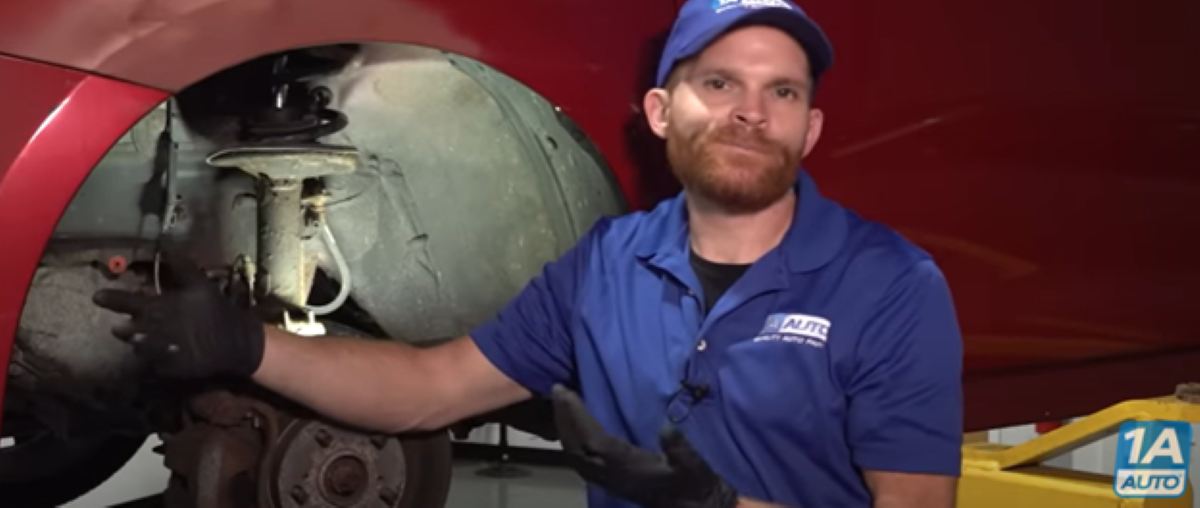Find out how when you replace the whole strut assembly instead of only the strut with expert tips from our mechanic Len in this article and video.
Should I Replace the Strut or the Whole Assembly?

Where Are Struts Located on My Car?
On most passenger vehicles, you’ll find struts at the front and shocks at the rear. On some vehicles, you may find struts at the rear instead of shocks.
What Do Struts Do?
The struts keep the wheels in contact with the road. They also keep the weight of the vehicle from shifting when accelerating, turning, and stopping. They can also affect how comfortable a car feels.
Symptoms of Bad Struts
Slower Stopping Time
If the car takes longer to brake than it used to and you know the brakes are in good condition, it might be from bad struts. When stopping, the weight of the vehicle shifts to the front, and bad struts will put more use on the front brakes than the rear, which can wear the brakes out.
Vehicle Sags to One Side
If there’s a problem with one of the struts, you may notice your car sags more on the passenger or driver side that has the bad strut. Not only does this affect your vehicle’s appearance, but it’s also unsafe.
Vehicle Feels Like It’s Swaying
You may feel like your car is swaying more when turning or driving if your vehicle has bad struts.
Uneven Tire Wear
Bad struts can also affect your vehicle’s alignment, causing uneven tire wear.
Vehicle Feels Bouncier Than Usual
If your car bounces up and down a lot more than usual, like several times or it feels excessive, you could have bad struts. When the struts are worn, their ability to absorb impact decreases, and this can cause your car to bounce more.
Debris and Damage

If you notice the strut is accumulated with debris, the oil and gas have mixed with debris like dirt. This means its time for a new strut.
Bad Coil Spring

Check the coil spring for damage. The coating on the coil can wear away and rust it out. This weakens the spring and it can lead to cracking and splitting, at which point the strut needs to be replaced.
More on the symptoms of bad struts
Why Should I Replace the Strut as an Entire Assembly?
The Strut Assembly Is Ready to Install and Does Not Require Special Tools or Disassembling
If you replace only the strut, you’ll need to reuse the old coil spring and strut cap than if you replace it with a whole strut assembly. These components can wear down and the extra pressure from the new strut can wear out the spring. The strut cap also has bearings that can wear out over time and risk contamination if removed. You’ll also need special tools to remove and install these components. By installing a strut as a new, complete assembly, you’ll save time and have brand new components than with only a new strut.
Should I Replace Struts as a Pair?
We recommend replacing the struts as a pair for that end of the vehicle. If you find a strut is damaged on the passenger or driver side of the front or rear, generally we recommend replacing the strut on the other side of that end. You’ll save time and money and it will prevent the symptoms above from happening.
After replacing the struts, we recommend you get a professional alignment.
Save on Quality Auto Parts – Free Shipping – Direct Fit


